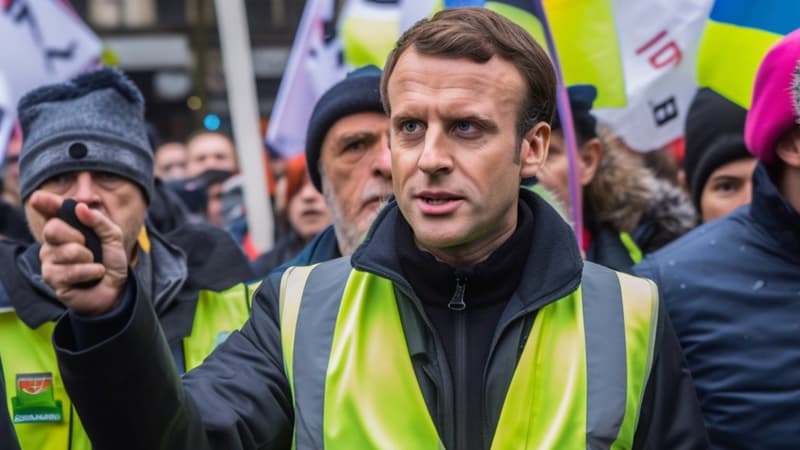Emmanuel Macron as a garbage collector or in a CRS, Donald Trump in an orange jumpsuit… Thanks to the artificial intelligence tool Midjourney, Internet users compete with false photographs of politicians who televise the news, such as press cartoons.
No need to be a designer or have software, everyone can create images that are sometimes breathtakingly realistic, bordering on deepfakes, these fake images or news videos intended to mislead the public. All it takes is one descriptive sentence to ask Midjourney, the tool of choice for these creations, to create the image of your choice.
Multiple “clichés” of Emmanuel Macron
For a few days, these creations abound on Twitter, echoing the demonstrations in France. The main target of these imitations, President Emmanuel Macron, staged in all situations: as a worker, with his cap curled up, as a farmer, as Napoleon… We can see him dressed as a Vermeer character or fleeing from tear gas.
On the other hand, the AI does not know how to imitate Prime Minister Elisabeth Borne, probably due to a lack of sufficient stock of images in its training base. Internet users also bounce off real presidential tweets, diverting one of the Executive’s privileged means of communication. One of them thus revisits the future ceremony of the Olympic Games, just announced by the Elysée, dressing the Seine with a tide of garbage.
In the United States, it is the hypothetical arrest of Donald Trump that fuels their imagination, with images of the former US president being chased by police on the street and then imprisoned, dressed in an orange jumpsuit.
risk of confusion
Internet users specify in most cases that their images were produced by Midjourney. But the proliferation of these inventions can cause confusion or create widespread mistrust. His images are not censored by social networks.
In its rules, however, Twitter specifies that it wants to fight “manipulated media” and reserves the right to place a warning if they are intended to mislead.
For its part, TikTok has updated its rules to better regulate these fake images. The platform now specifies that “synthetic or manipulated media depicting realistic scenes must be clearly reported” with mentions such as “synthetic”, “fake”, “unreal” or “modified”. The social network explains that it completely prohibits deepfakes to private people but not to public figures.
“While we give public figures more leeway, we don’t want them to become abused or mislead people about political and financial issues,” TikTok said.
Source: BFM TV


